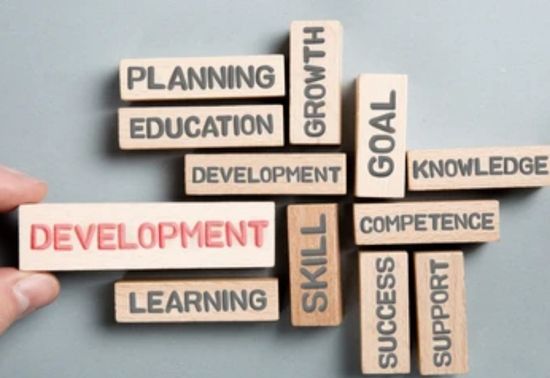Personal Development Program: An Approach To Personal Growth and Transformation


While it’s never too late to take the first step in your journey of personal development, starting early can ensure that you are a learner for life. Often however students are unaware of how important it is to be self-aware, not just for career choice and readiness, but for personal growth and transformation.
As a teacher, I have often found that often, students do not explore their strengths, areas of improvement or ambitions, and values, and are therefore unable to take informed decisions about their careers and life. While following the herd, or letting life happen through happy (or unhappy) accidents could be heuristics that work for many, perhaps a faster and smarter option would be to take stock of oneself and one’s goals and prepare a personal development plan to help one to achieve the goals and outcomes that one aspires to achieve.
The idea of a personal development program (PDP) is derived from a belief that we can work on ourselves to develop skills and competencies that will help us to upskill in order to meet the expectations of roles that we aspire to take up. In helping students to develop a plan for self-development, I begin with the concept of personal mastery discussed by Peter Senge in his book titled The Fifth Discipline. Senge equates personal mastery with personal growth and learning, characterised by those who “are continually expanding their ability to create the results in life they truly seek.” This requires an individual to inculcate the discipline of identifying personal goals and values and identifying areas that they need to work on in order to achieve those goals.
Many students are ambitious and want to accomplish a lot of things, but they don’t quite know where to begin. This is also the time when they are unsure about their career aspirations and goals, and unable to find a feasible solution to address their issues. How do I set my sights on my career path? How do I find my passion? Is there any shortcut through which I can get there quicker?
A PDP motivates students to introspect, make choices and take action/s that are aligned with their goals and interests by showing them how they can invest in themselves to work on deficiencies or develop skills that will make them ready for their chosen careers. This is because personal development empowers students to take the initiative, identify areas of improvement and work on those areas. Instead of waiting for things to happen, they can become the prime movers in their own lives.
Once the personal goals and values have been identified, and the skills and expectations of the roles one aspires to are outlined, the next step is to take stock of oneself. This may seem daunting as it requires a fair amount of self-analysis and introspection, but students can take psychometric tests and get feedback from people with who one has interacted closely – parents, professors, bosses, colleagues and friends.
Once the students have collated their psychometric test results and feedback, it is essential to conduct one-on-one sessions with each student to help carve out their development plan. It is very important to do this individually as two people can look at the same situation and come up with two completely different ways to approach it. The sessions help the individual figure out where they are right now, in terms of both professional and personal stages of their life and where they aspire to be in the next few years. The next step involves the identification of the gaps and skills needed to bridge those gaps. The process of prioritizing and identifying the learning goals is then followed by creating a roadmap and a plan to achieve those goals. At the end of every session, it is imperative for students to have some tangible steps they can take to bridge those gaps over the next six to eight months.
The entire PDP journey helps the students to inculcate lifelong learning habits. Ideally, the process needs to be repeated every year once initial short-term goals have been achieved. This helps the student to constantly grow and thrive in a dynamic environment.
In today’s world, if students or employees want to succeed, they need to be agile, which means they need to rise beyond current skills and keep reinventing themselves to remain relevant. In the long term, the PDP is a tool to create self-aware employees who are learners for life, and who have a growth mindset.
With a Ph.D. in Social and Organizational Psychology from IIT Kanpur, Prof. Leena Chatterjee has been teaching at IIM Calcutta for almost 36 years now. She is a Professor at the Organization Behaviour group and takes several courses for both the postgraduate and doctoral programs at IIM Calcutta. She holds a B.A.(Hons) and M.A. in Psychology from Delhi University. Dr.Chatterjee has presented her research at several international conferences and has published various articles,
journals, and cases. She joins BITSoM as a permanent faculty member in July 2021.